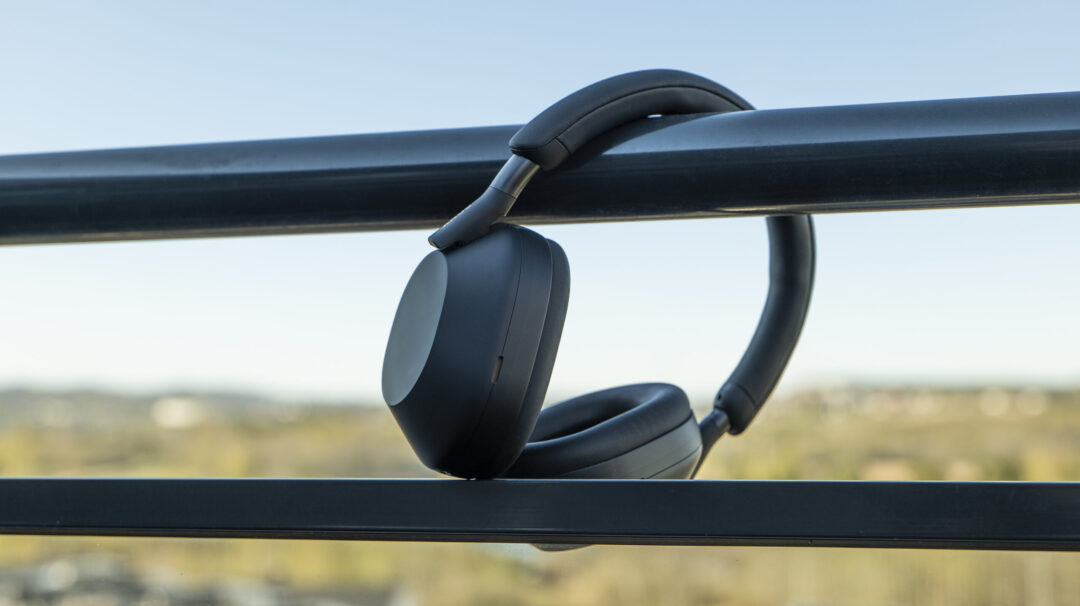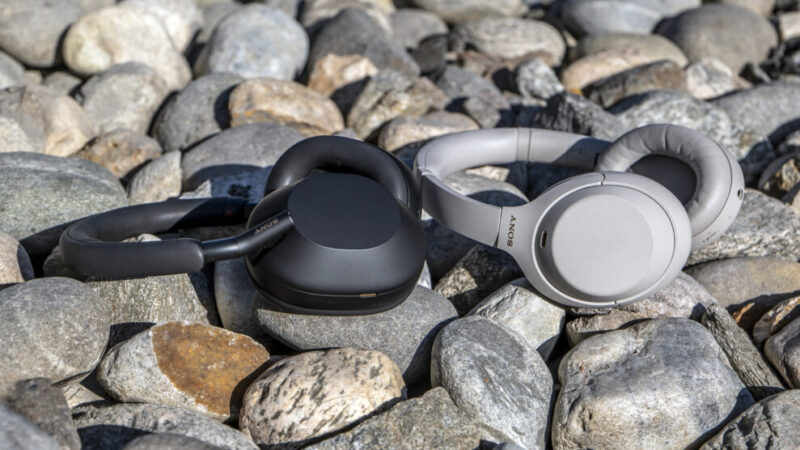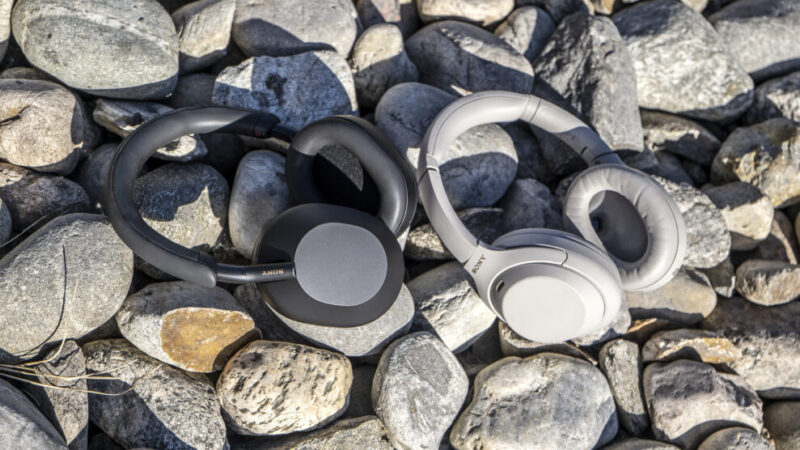Every time Sony has launched a new top-of-the-range wireless noise-cancelling headphone in recent years, they’ve been their own worst competitor. But as long as they made something better than its predecessor, they knew they had a winner. And I brought out the superlatives myself when I tested the WH-1000XM4 in the fall of 2020.
But that was almost two years ago, and in a group review last year we had to conclude that while Sony was still the best at noise reduction, the sound quality was well below the best of the competition. The XM4 had fast and stable bass, but it didn’t go particularly deep, and it generally lacked a bit of dynamics and resolution.
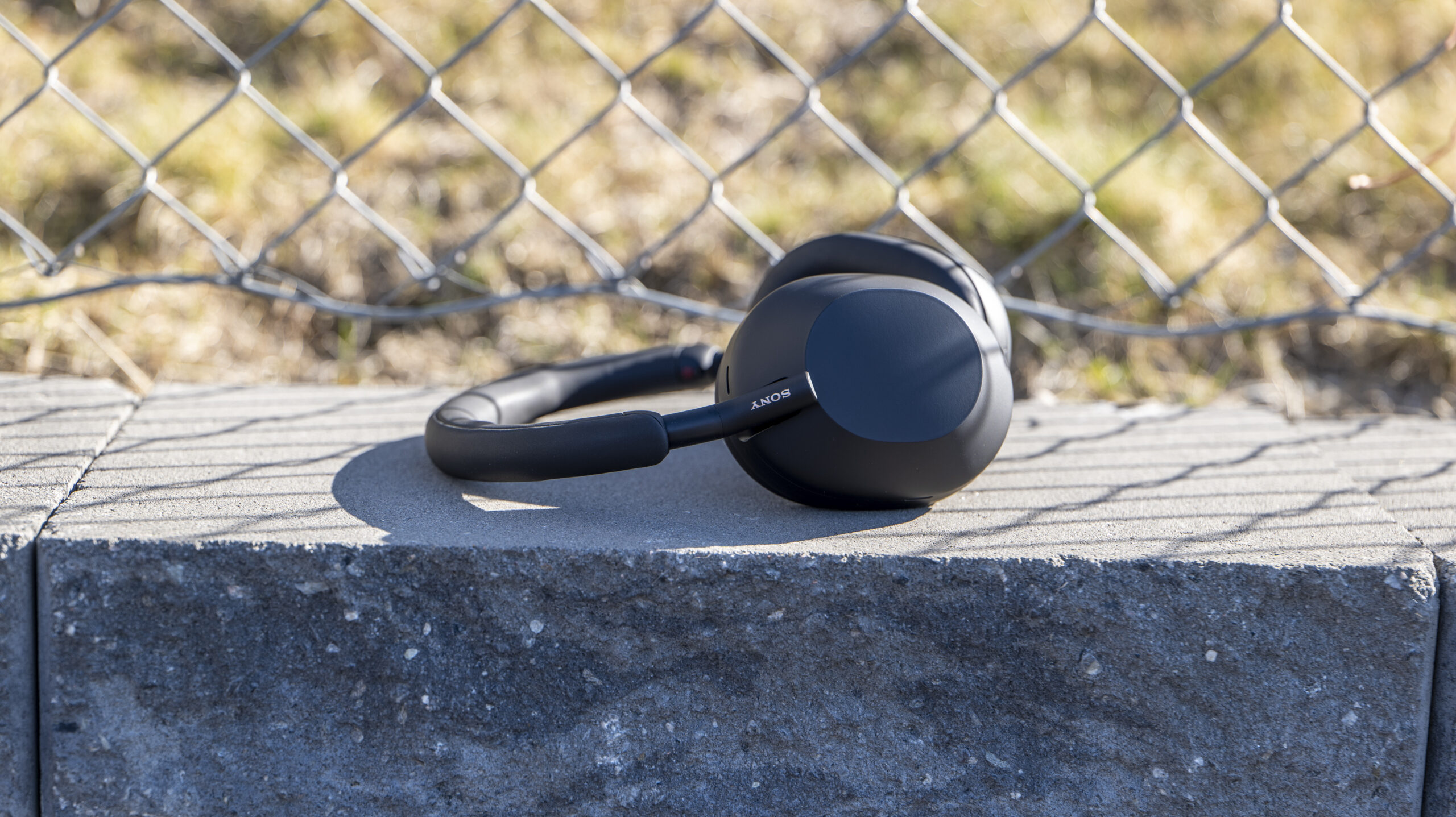
Better drivers
With the new WH-1000XM5, Sony wants to take the sound quality of music to a new level and has equipped them with brand new drivers. Where 40mm diaphragms were used before, they have now been shrunk to 30mm. But no compromises have been made, Sony promises, using expensive carbon fibre as the diaphragm material for better and cleaner sound.
In order not to lose energy in the bass range, the stroke length has also been increased, which the new and faster drivers should handle just fine.
The most advanced noise reduction
Sony has worked hard to make the excellent noise reduction even better. It has doubled the total number of microphones (now eight) and has a separate noise processor alongside a digital processor for audio. By using two separate processors, the noise cancelling function can work completely on its own, suppressing noise even more effectively.
The 1000XM5 also attenuates wind more effectively if you select wind reduction in the app.
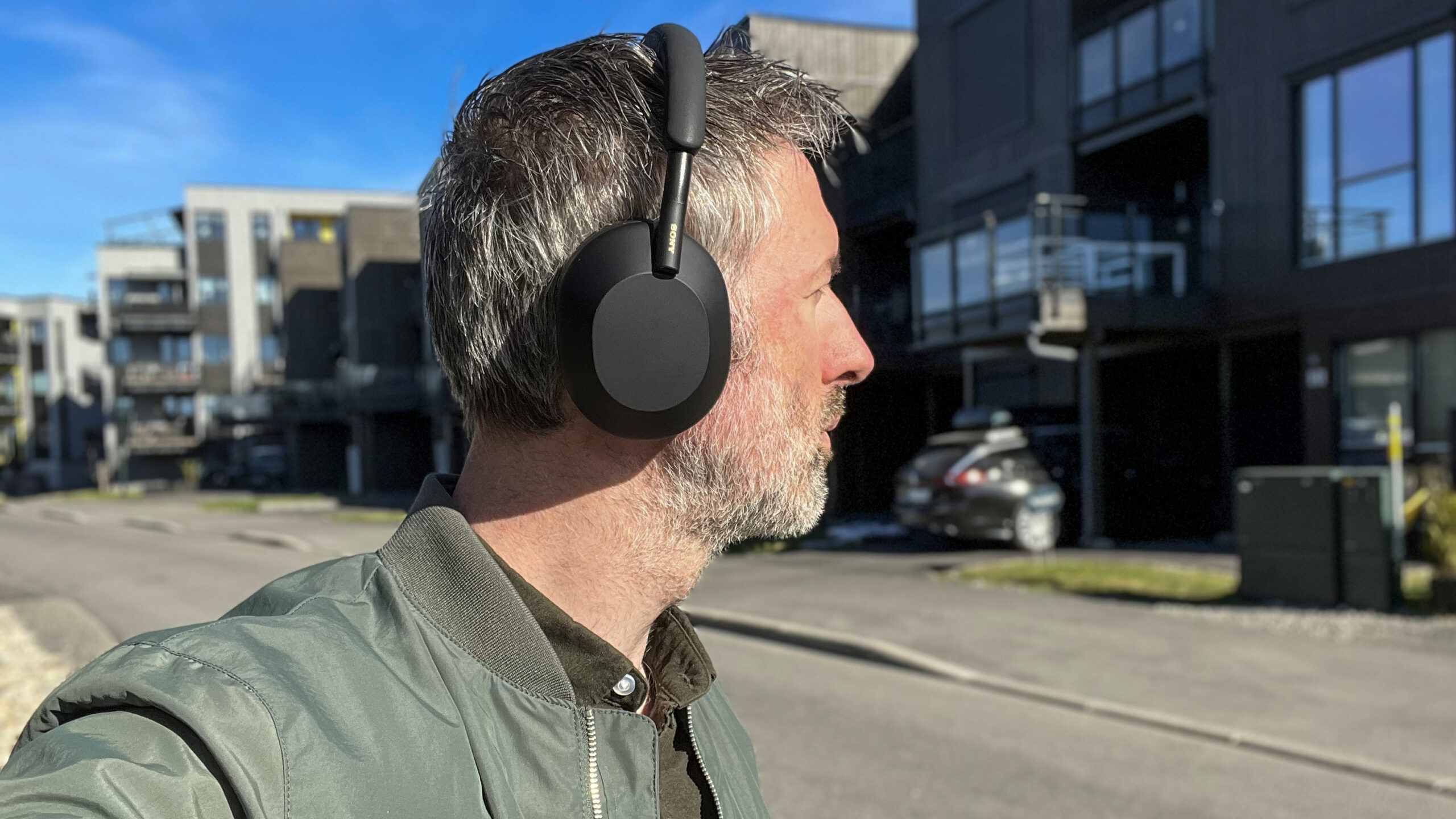
Promises great call quality
Sony promises optimal call quality thanks to four so-called beamforming microphones, which means that phase manipulation succeeds in picking up almost only the sound coming from the mouth, while ambient noise is shut out. Several microphones must work together to achieve this.
In the case of the XM5, a form of artificial intelligence is also used to analyse voice and environment. The result should be a quality of conversation similar to that obtained with specialised headsets with a microphone boom placed in front of the mouth.
Fitting
There weren’t many changes to the design from the first WH-1000X through the XM2 and XM3 to the XM4, but with the XM5 the design has finally been revamped. Firstly, the ear cups sit on thinner, round bars with lightweight and flexible joints. There’s significantly less fuzz here, mainly because the “wishbone” mounts from previous editions are gone.
This has led to a compromise, namely that the XM5 cannot be folded completely, as its predecessors could. They’re only partially foldable, allowing you to rotate the ear cups 90 degrees. Fortunately, the headband is very flexible. You can almost wrap it around your wrist, and it would take a lot to break them by sitting on them.
The XM5 fits like a dream on your head! The ear pads are actually thinner than before, but in return have better space for the ear inside. The fact that they are four grams lighter might not be noticed as much, but together with the fine fit, they feel significantly lighter than before. At exactly 250 grams, they still weigh ten grams more than the Bose QuietComfort 45, but you don’t really notice.
User friendliness
As before, the headphones are operated by swiping back and forth on the ear cups with your fingers, a technique Sony has mastered better than most. The headphones have a ‘talk for conversation’ function, so when you start talking to someone, the headphones will automatically mute the music and activate sound dubbing so you can hear your surroundings. Alternatively, you can put one hand around the right ear cup and the same thing will happen.
Pairing the headphones with your phone is easy. If you have an Android, they pop up on the screen as soon as you put them in pairing mode.
The same thing actually happens with a PC running Windows 11 – the first time I’ve seen this. You don’t have to go into the Bluetooth settings and find them, which can be quite complicated with Windows. Mac and iPhone users, on the other hand, will have to go into their Bluetooth list.
The fact that the headphones can be fast-charged in just three minutes and get a full three hours of playtime also adds to the ease of use, as does the fact that they have multi-point connectivity (that two devices can be connected at the same time).
Not tested with the app
Before the WH-1000XM5 goes on sale, Sony launched a new version of their Headphones Connect app, but it wasn’t available during testing. And since the old version doesn’t work with the new headphones, I had to test them without the app. Fortunately, the excellent LDAC codec is enabled from the start, so I’ve tested with the best starting point for sound quality.
On the other hand, I haven’t been able to check the voice control and EQ settings or the 20-step noise reduction. I’ve only been able to test with both noise reduction and audio throughput at max. In the app you can also adjust the amount of noise reduction on calls, and here too they are set to max, it seems.
Good call quality
The call quality of the Sony WH-1000XM5 is exquisite! My voice comes through loud and clear and sounds cleaner and more open than with its predecessor. Compared to the office headset Jabra Evolve2 75 (review coming soon), which has a microphone boom, I actually think the Sony sounds more natural, where the Jabra focuses just too much on the slightly harsh upper midrange.
That is so in quiet surroundings. With background noise, it necessarily becomes Jabra’s advantage because you can more effectively filter out the noise without compromising the user’s voice. But the beam-forming microphones work well, and you can be heard through noise too. It’s impressive how effectively the Sony’s swallow the noise. In fact, the receiver hears almost no noise at all!
The downside of too much background noise (I cranked up the pink noise from a speaker in the background quite high) is that the Sony also removes much of the user’s voice, especially in the important high frequency range where consonants lie. The result is somewhat mumbling.
But compared to the WH-1000XM4, the new version is much better for conversations and also better than any other I can think of, apart from the best office headsets with mic boom.
Even better noise reduction
The active noise cancellation in the new Sony’s deserves its own chapter. It’s even more effective than its predecessor in the upper register, while the bass register is attenuated about as much as before. The XM4 was already the best in class, so the XM5 in other words beats all the competition here.
But what’s most impressive is how Sony has eliminated the hiss that usually occurs when noise reduction is activated. It was already greatly reduced on the XM4 compared to the XM3, but now it’s completely gone! Okay, you might hear a bit in the distance if you really concentrate, but they’re quieter than anything else I’ve heard. Ever. Sony has really done well here.
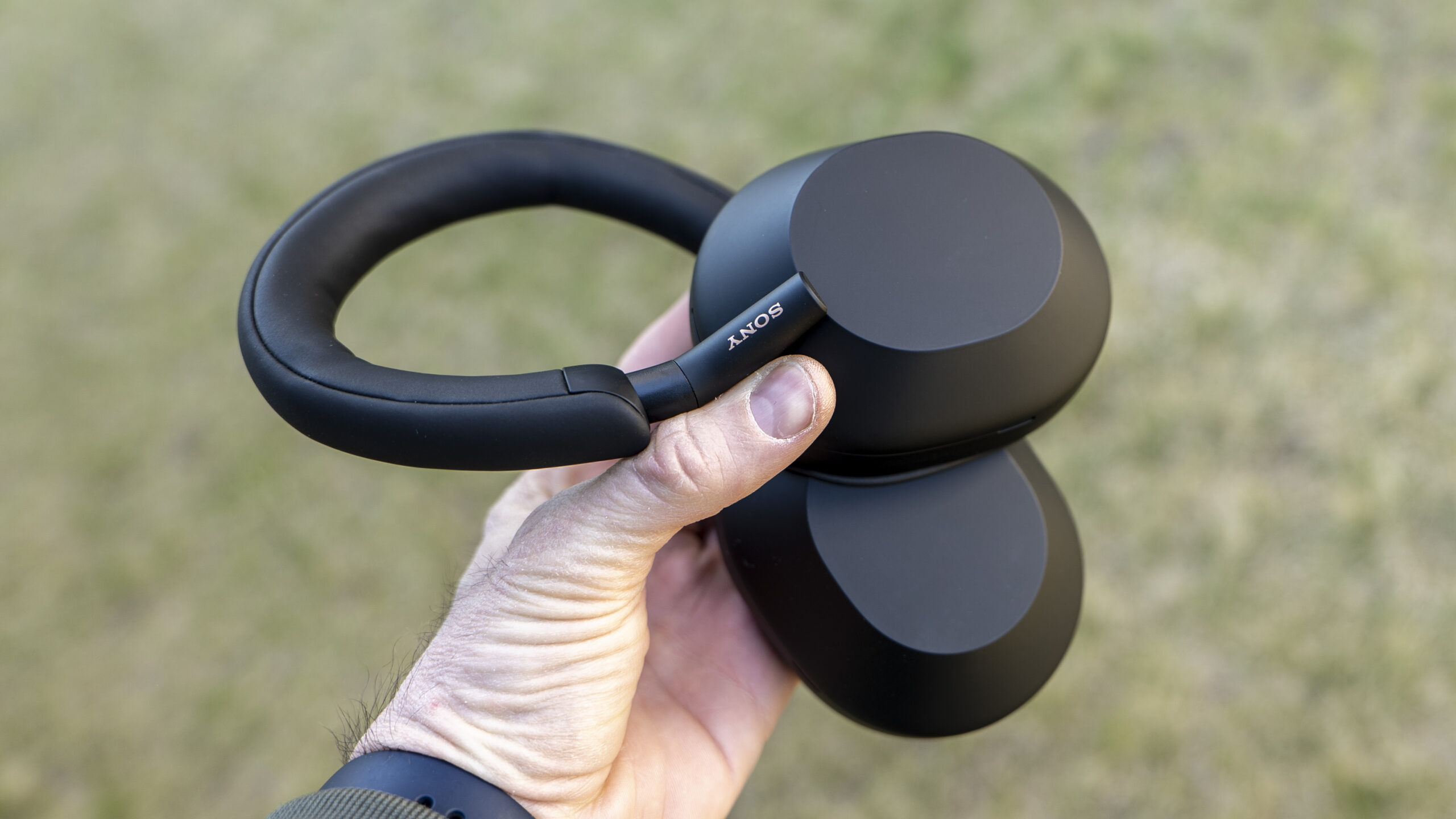
Sound quality
But where Sony hasn’t shone in the past, compared to its fiercest competitors, is on the sound quality of music. Mind you, Sony has always been above average, but they have found themselves beaten by the Beyerdynamic Lagoon and Shure Aonic 50, and roughly on a par with the Bose QuietComfort 45. Just different, in that Bose sounds more linear, but also a little coarse-grained at the top, while Sony has had a more pleasant treble, but an exaggerated and slightly unnatural bass.
So what about the XM5? I’m happy to say that the sound quality is better than on the XM4. The predecessor had an exaggerated emphasis in the mid-bass area, which gave a good drive in the bass drums, but at the same time it rolled off too early. There was no real deep bass, and the soundstage didn’t get as much foundation at the bottom, which is important for giving the impression of holography and stereo width. They also lacked some energy and … [shine] in the treble area.
On the WH-1000XM5, all the weaknesses have been addressed. The bass goes deeper and sounds more natural. A double bass sounds much more like just that, while there’s no less punch in the midbass. Drums reverberate, electric basses sound juicy and catchy, and a deep male voice like Leonard Cohen’s gets a much wider register to unfold.
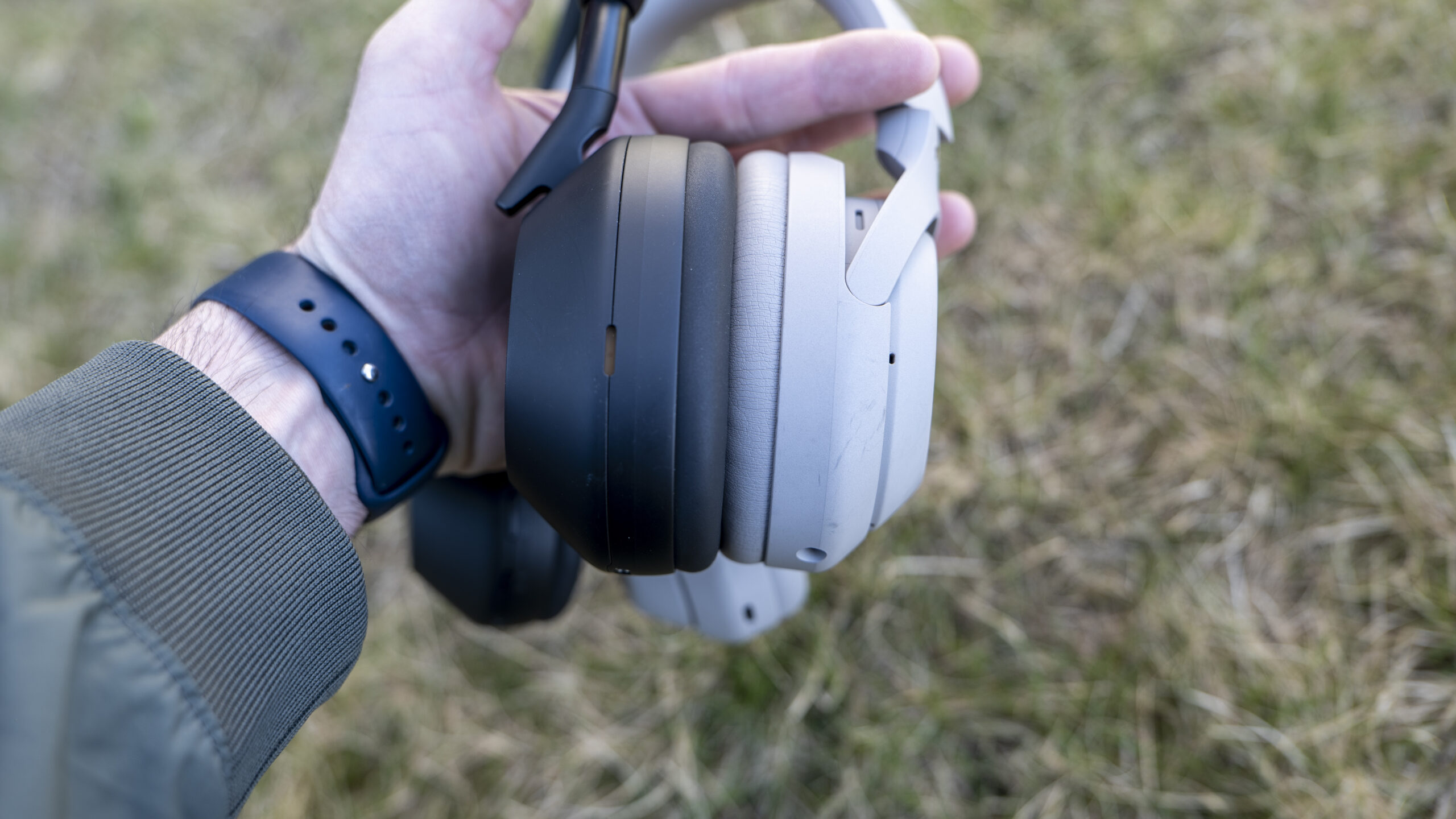
DSEE Extreme
The headphones also have a better algorithm for recreating the harmonics of compressed music. Sony calls it DSEE Extreme, and it’s supposed to make cymbals and highhat in particular more natural. Without access to the app, I wasn’t able to test with and without the feature, but it’s presumably enabled right out of the box.
“BOOM” by Tiësto and Sevenn packs a punch while never sounding sharp. The soundstage also experiences more air, but whether that’s because the deeper bass provides more contrast or because the headphones actually have more to give off at the top is hard to say. But there’s enough air without it becoming sharp.
The Shure Aonic 50 still has the upper hand in the overtones and sounds more neutral too. Alexis Ffrench’s piano sounds more detailed, and the lighter keys in particular have more touch. But the Sony performs well, even on classical music, and sounds more entertaining on electronic music and pop.
Putting it all together, the Sony WH-1000XM5 are the best noise-cancelling headphones I know.
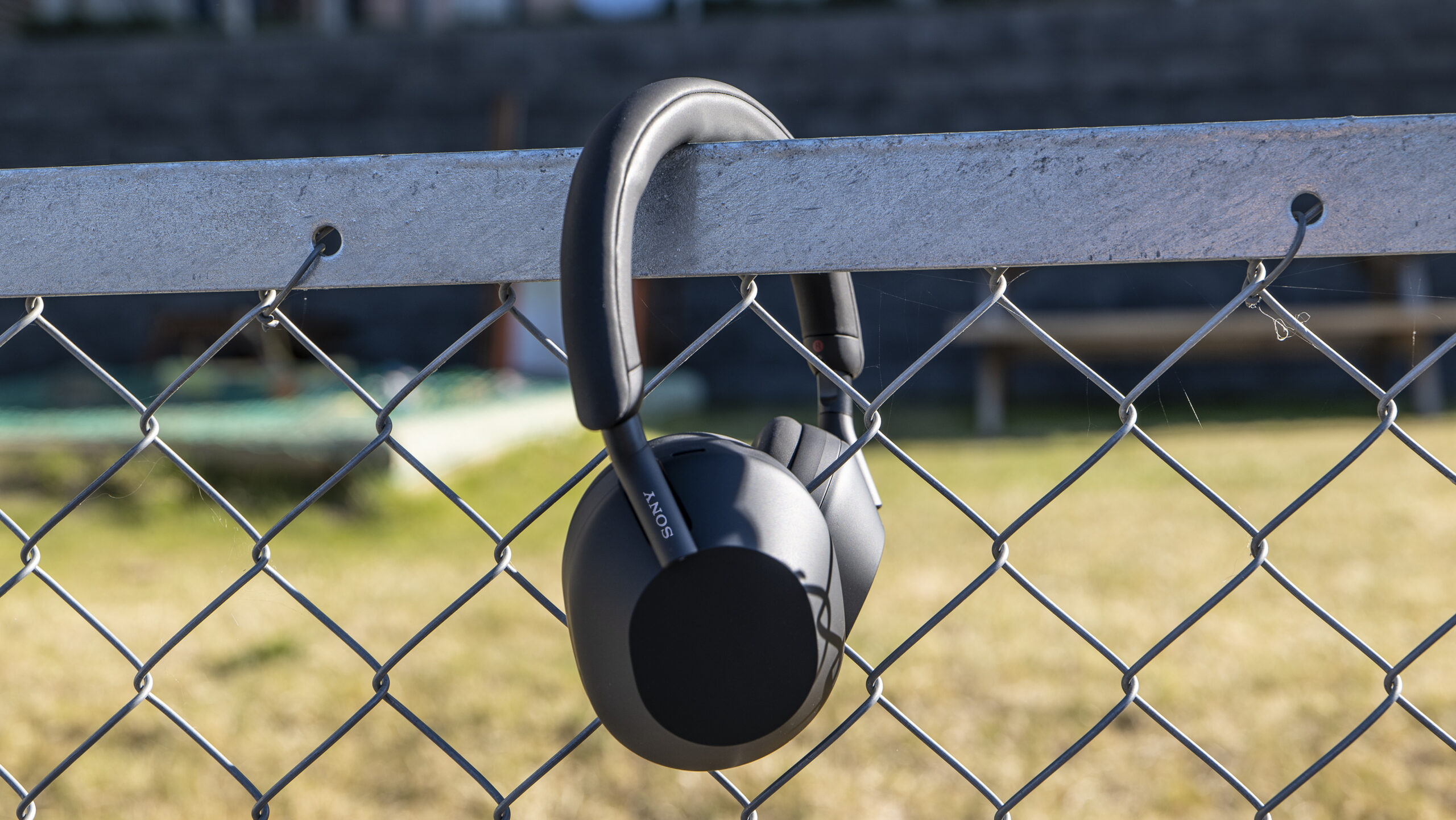
Conclusion
Sony have outdone themselves with the WH-1000XM5. Noise reduction, perhaps the most important thing on such things, is more effective than ever, and now the usual background hiss is reduced to the barely audible. I said the same about its predecessor, but this time it’s jaw dropping. Fantastic!
The fit is even better than before and they are among the most comfortable on the market. The call quality has to be the best I’ve heard from such headphones, and the sound quality on music has also improved. The bass goes deeper and sounds more natural without compromising the entertainment factor. In short: They rock!
Disclaimer: We were unable to test the app as it had not gotten support for the XM5 during the testing period.

We think
Best-in-class noise reduction - without any audible hiss! Warmer bass and better resolved sound than its predecessor. Really good call quality, with noise effectively attenuated. Super comfortable! In typical Sony style, the midrange is a little restrained. No longer completely collapsible.
500 €
Specifications
- Type: on-ear, closed, wireless
- Drivers: 30 mm
- Frequency range: 8 Hz – 40 kHz
- Active noise cancellation: yes
- Noise reduction: Yes
- Battery life: Up to 30 hours w. ANC
- Resistance: IPX4
- Voice control: Amazon Alexa, Google Assistant, Apple Siri
- App: Sony Headphones Connect
- Connections: Bluetooth 5.2 (SBC, AAC, LDAC), 3.5mm analogue
- Charging: USB-C (fast charge 3 hours in 3 min.)
- Other: 360 Reality Audio certified
- Weight: 250 g
- Colours: black, white
- Web: sony.com
